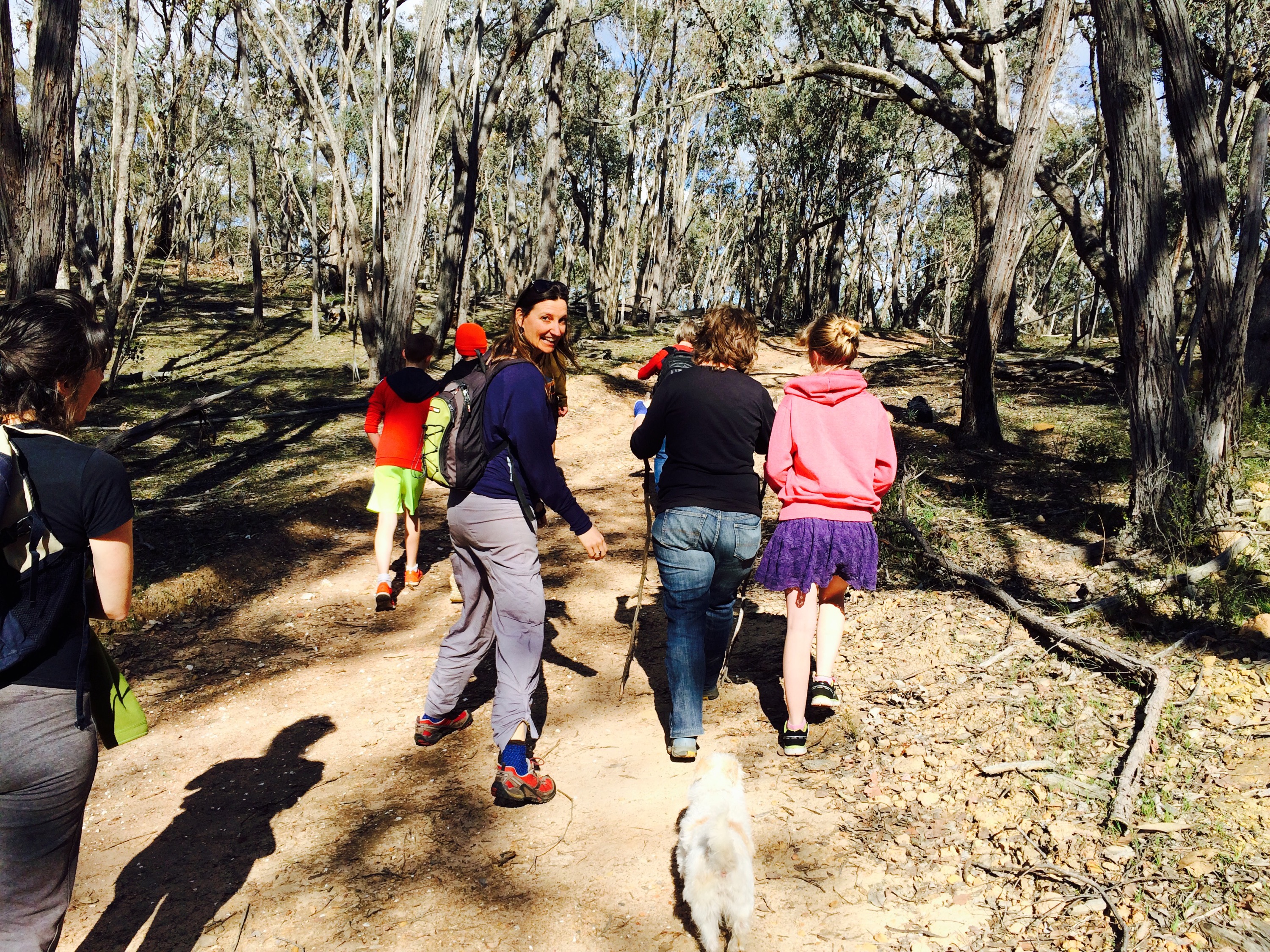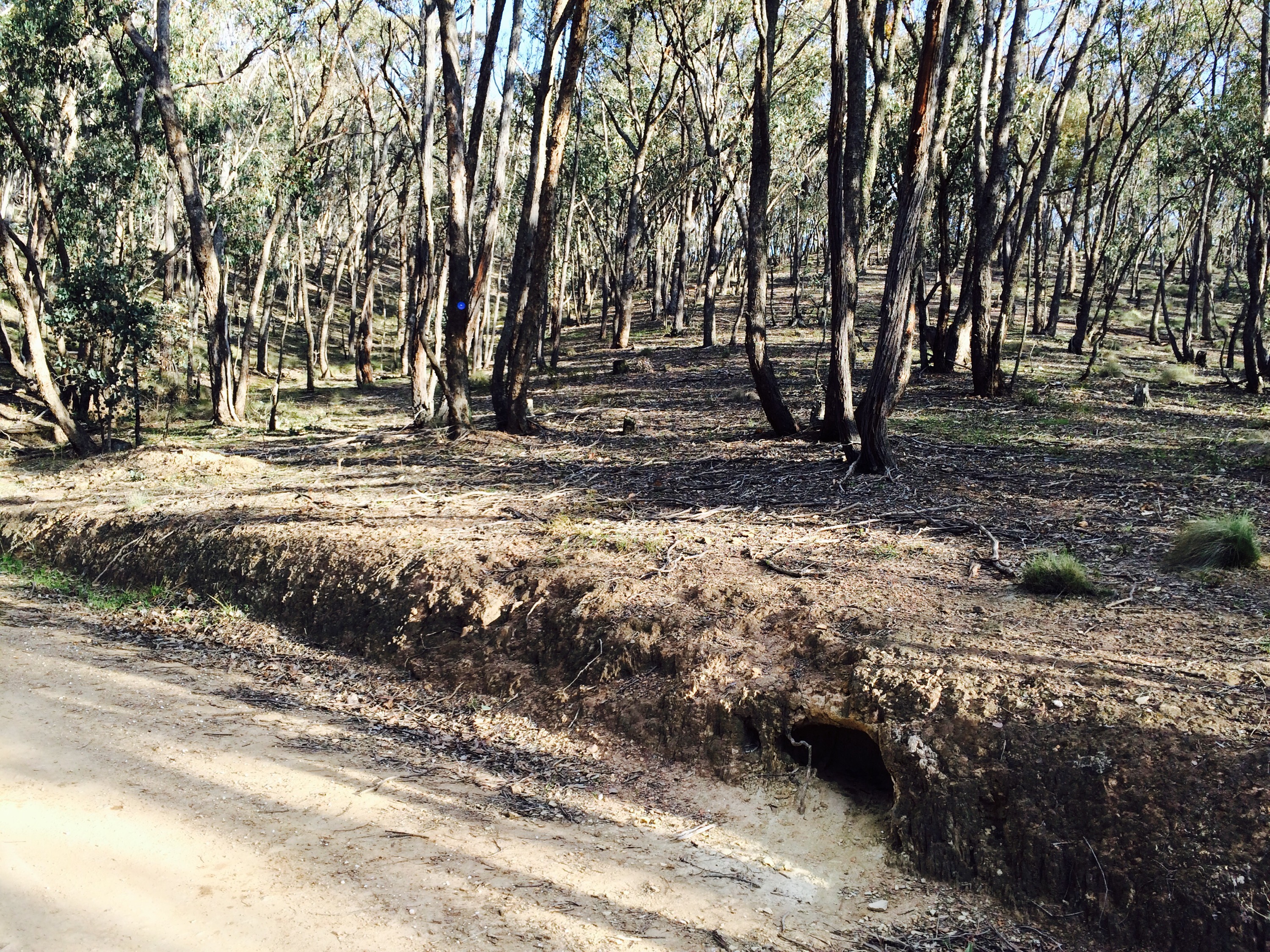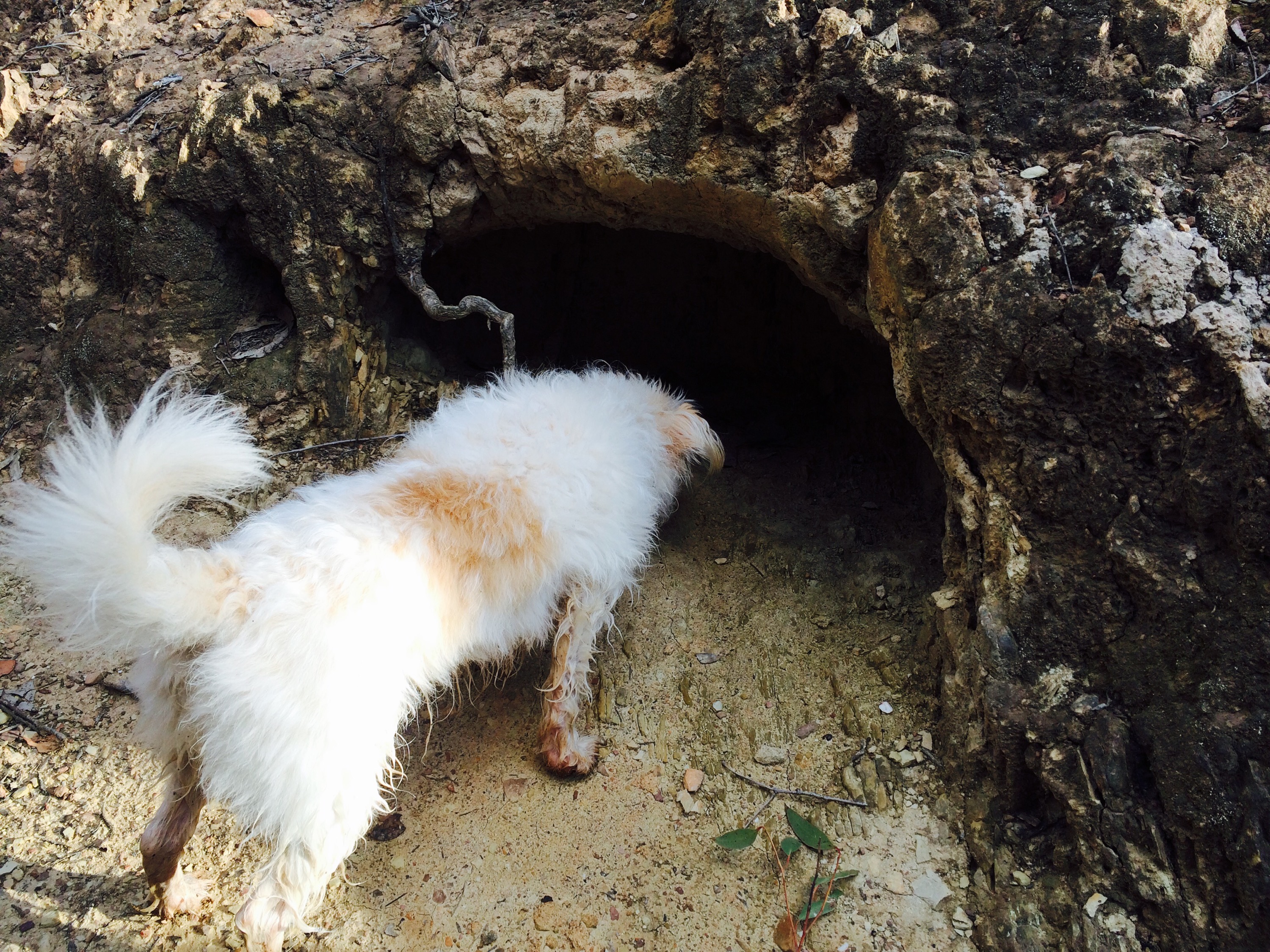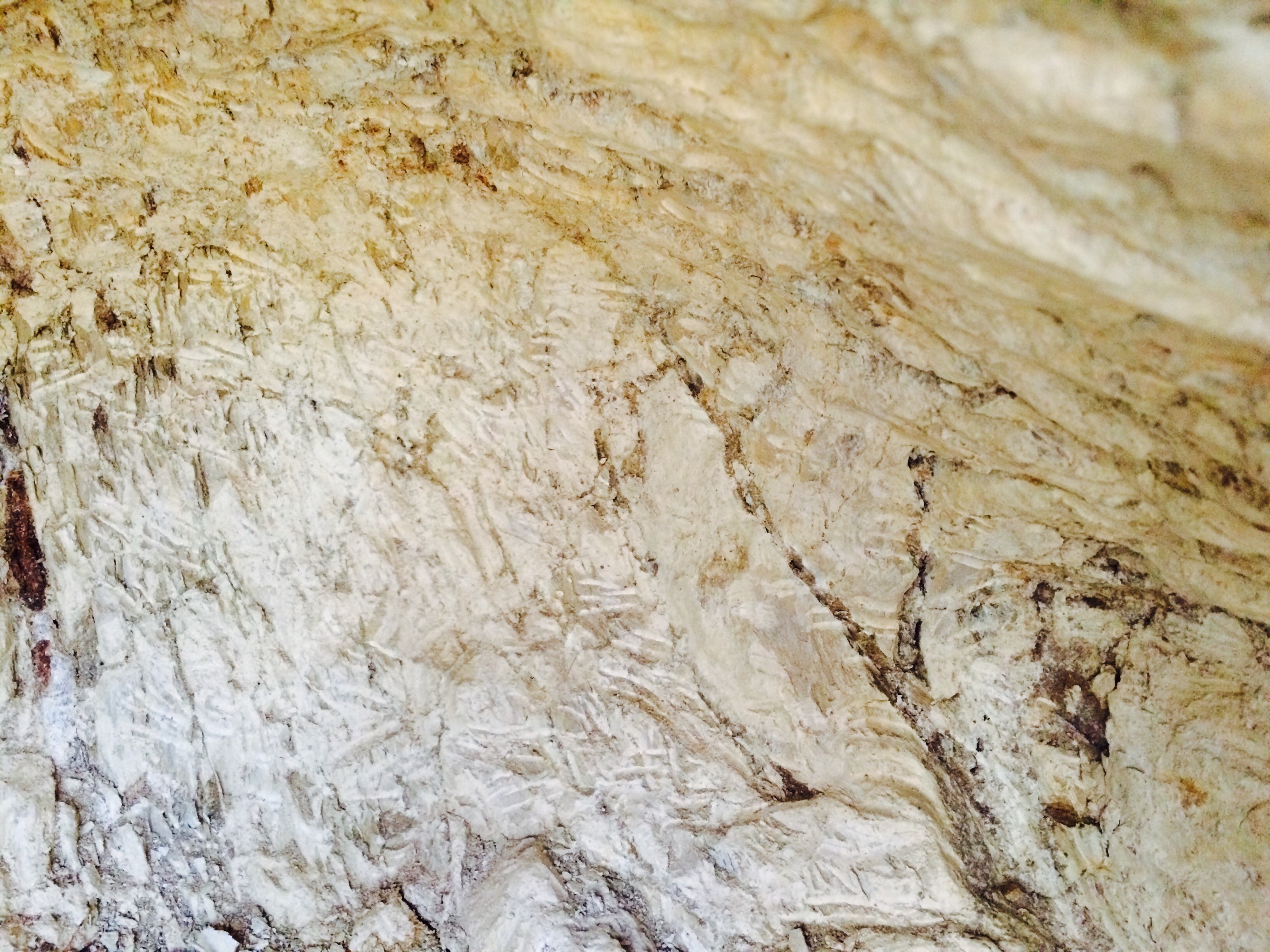Ah the wondrous benefits of the naturalist who gets to know his or her patch very well indeed! I had the privilege of heading out on a bush walk with Sharon and Dave in the Yandoit area last Saturday; with a host of other local walkers, kids and dogs.

Last year at a birthday barbecue Sharon and Dave had mentioned they knew of a kangaroo clay lick in the Yandoit area. And happily this walk took us straight past! They had noticed the hole on a few occasions, and one day they saw a kangaroo actually using it.

And demonstrated here by their cute terrier Daisy:

We tasted the clay to see if it was salty or high in mineral content but couldn’t tell!
A quick search online and I have found an article from the Australian Journal of Mammalogy called ‘Facultative geophagy at natural licks in an Ausyralian marsupial’ by Emily C Best et al 2003. This article looked at the use of clay licks by eastern grey kangaroos – and looked at whether geophagy was prompted by dietary mineral content, reproductive phase or thermoregulation. The authors believe that geophagy or clay licking in eastern grey kangaroos is facultative rather than obligative ( done on an as-needs basis) as it has not been observed in other very highly studied populations. The clay licks examined in their study had significantly higher levels of sodium, magnesium and sulphur.
Here is a pic of the teeth or scratch marks of this lick:

The authors conclude that ‘geophagy is most likely to be found in areas with high temperatures that are naturally low in sodium’. And that these factors were the motivators : mineral content of the grass at different times of years affected lick visits, reproductive status – lactating females, and temperatures : high temperatures – more sodium loss from the arm licking behaviour the roos use to keep cool.
But it’s funny – in central Victoria we have really long cold winters. Are we in a particularly low sodium area? Is this a western Victorian peculiarity? Perhaps this should be reported to a kangaroo ecologist! Thanks Sharon and Dave – top work! Pdf of the article available on request. : )
0 Comments